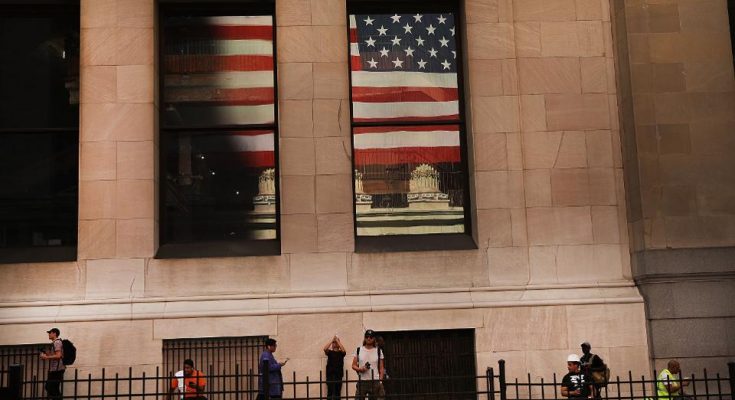The stock market started off the week on a bullish note, as the strong close on July 6th, a reaction to the strong jobs report, signaled that the markets major trend had resumed. The short-term analysis forecasted a likely pullback during the week, which was supported by the fact that the averages hit my initial targets last Monday.

(Photo by Spencer Platt/Getty Images)
The sharp drop after the close on Tuesday, likely in reaction to new proposed Chinese tariffs, hit the stock index futures and Asian markets hard. The S&P futures opened Wednesday well above the lows, and though the close was negative, the selling did not increase through the day. Stocks turned higher on Thursday. For the week, the S&P 500 was up 1.5%, the Nasdaq Composite gained 1.8% and the Dow Industrials rose 2.3%.
Though the trade conflict did not subside last week, it has become clear that the business community, including the decidedly conservative US Chamber of Commerce, are becoming more nervous. In a study released last Monday, they commented that “New tariffs on steel, aluminum and Chinese imports, as well as the potential for additional tariffs on autos and auto parts, have pushed us to the brink of a global trade war.” These concerns were also the focus of a weekend article in Barron’s “Tariffs Taking Toll on Business Confidenceâ€.
As I pointed out recently in “Three Warning Signs Of A Bear Marketâ€, when a bull market transitions to a bear market, there is a deterioration in both investor and business confidence. Friday’s Consumer Sentiment came in a bit lower than expected, and was down from June’s final reading. The major uptrends are still clearly intact.
In the latest American Association of Individual Investors survey, the bullish % jumped 15.2 point to 43.1%, which is the highest reading since February 15, when it hit 48.5%. The bearish % dropped 10.1 points to 29.2%. This could be an aberration, as it is somewhat inconsistent with other measures suggesting that investors are still nervous.

